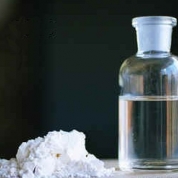GHB (and GBL)

Description
GHB (gamma hydroxybutyric acid) was developed in the early 1960s as a human anaesthetic but was discontinued due to unwanted side effects. It is a naturally occurring component of human cells.
GHB is used most commonly in the form of a chemical salt (Na-GHB or K-GHB), which is taken recreationally as a depressant with effects quite similar to those of alcohol. These salts are powders but are most often mixed with water for recreational use.
GHB is most notorious for a few cases in which it has been given to people without their knowledge (in “spiked” drinks). It is more commonly used as a recreational intoxicant (like alcohol), a sleep-aid or a supplement for body-building.
GHB is a depressant. A small dose will accentuate the user’s mood, making a happy user feel relaxed and uninhibited and making a depressed user feel more down.
With larger doses there is a risk of unpleasant side effects such as feeling and being sick, suffering from numb muscles and disorientation. Some people have had seizures and collapsed.
The onset of effects usually appear after 20 minutes, with the peak effects appearing after an hour. It can remain in the system for a few hours.
GBL is the precursor chemical to GHB and in the body is quickly metabolized into GHB. It appears in the same liquid form and produces equivalent effects to GHB. GBL is used in industrial chemistry in the UK and is widely available in the form of wheel cleaners, cleaning solvents, multi-purpose stain removers and chrome polish.
